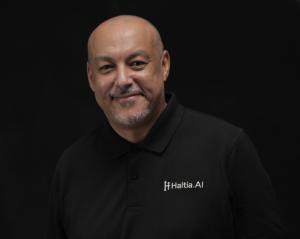
Haltia.AI Showcases Why Composable AI is the Game-Changer for Businesses to Survive and Thrive in the AI Revolution
ASIMOV by Haltia.AI boosts enterprise agility with Composable AI, allowing rapid adaptation and customization in fast-paced markets.
"Composable AI is the next big miracle in business tech that most CEOs should be considering before getting locked in to a particular AI vendor," says Talal Thabet, CEO of Haltia.AI. "Think of it like building with LEGO blocks—you can quickly switch things up, plug in the latest AI tools, customize to your needs, and stay ahead of the game in a world that's moving faster than ever."
In this rapidly evolving technological era, Composable AI provides businesses with essential tools to remain competitive and responsive. This architectural approach allows organizations to swiftly adapt their AI capabilities, integrating new technologies as they emerge.
As artificial intelligence (AI) reshapes the business landscape, enterprises are moving away from monolithic AI systems to more flexible, modular architectures. This transition promises greater customization, adaptability, and future-proofing for organizations across various industries.
The Rise of Composable AI
Traditional monolithic AI systems often struggle to keep pace with the rapidly evolving needs of modern enterprises. According to a recent study by Gartner, by 2025, 60% of organizations will use composable architecture to enable innovation and adaptability, up from less than 10% in 2022.
This shift towards composability is driven by the need for greater flexibility, scalability, and interoperability in AI systems. Composable AI architectures allow businesses to assemble and reassemble AI components like building blocks, tailoring solutions to specific needs and easily integrating new capabilities as they emerge.
Benefits and Alignment with Digital Transformation
Composable AI delivers significant cost-saving benefits for enterprises, particularly in how it reshapes the development and deployment of AI solutions. Traditionally, building AI systems from the ground up requires extensive resources, both in time and capital. Composable AI flips this model by allowing companies to reuse pre-built AI components, meaning they don’t have to reinvent the wheel for every new application.
“This modular approach cuts down on development costs by reducing the need for specialized labor, as teams can simply integrate existing AI blocks rather than develop everything from scratch”, says James Nicol, CRO at Haltia.AI. Enterprises also benefit from lower maintenance expenses since modular systems are easier to update and scale over time. When market conditions shift, businesses can quickly swap out or upgrade components without overhauling entire systems, avoiding the hefty price tag of full-scale redevelopment.
Nicol adds, “Additionally, by accelerating time-to-market, Composable AI helps enterprises capture revenue sooner. Instead of waiting months or even years to roll out AI-driven products or services, companies can deploy solutions in a fraction of the time, creating a faster return on investment. This agility not only minimizes financial risk but also empowers businesses to capitalize on emerging opportunities and maintain a competitive edge.”
According to McKinsey's research, companies with strong digital and AI capabilities consistently outperform their peers. These leading organizations often employ modular tech stacks, aligning their technology investments with business strategy and focusing on building key capabilities in areas like data architecture, talent, and operating models.
Composable AI in Action: Transforming Industries
The potential of composable AI is already being realized across various sectors. In the financial services industry, for instance, institutions are enhancing their fraud detection capabilities, rapidly deploying new models across regions and quickly adapting to emerging fraud patterns. Similarly, in healthcare, providers are enabling more personalized and efficient patient care by analyzing diverse data sources, from electronic health records to medical imaging, creating comprehensive patient profiles that aid in diagnosis and treatment planning. In the public sector, government agencies are improving citizen services by assembling AI modules for tasks such as natural language processing and predictive analytics. They can therefore create more responsive and efficient systems for everything from processing applications to predicting infrastructure maintenance needs.
"The versatility of composable AI is driving innovation across industries," notes Thabet. "We're witnessing a paradigm shift in how businesses perceive AI—as no longer a static tool but a dynamic, evolving ecosystem that can be tailored to meet specific needs and challenges, and yes, even while being a small size company that wants to control its growth costs but remains hungry for a competitive advantage."
Challenges and Considerations
While the benefits are compelling, the transition to composable AI is not without challenges. Organizations must carefully consider data integration, ensuring seamless data flow between different AI components and existing systems. There's also a skill gap that needs to be addressed, with expertise in modular architecture design and implementation becoming increasingly crucial. Furthermore, establishing clear protocols for component selection, integration, and management is essential for successful implementation.
ASIMOV by Haltia.AI: Leading with Composable AI
"With ASIMOV by Haltia.AI's composable architecture, we're overhauling the development landscape, fundamentally transforming how AI systems are constructed" states Arto Bendiken, CTO of Haltia.AI. "Designed for dynamic scalability and rapid adaptation, this system slashes development cycles and operational costs dramatically as it molds to fit exact business requirements.""
Market Outlook and Future Trends
The market for composable AI solutions is about to experience significant growth. MarketsandMarkets projects that the global composable applications market, which includes AI components, will grow from $7.2 billion in 2022 to $21.1 billion by 2027, at a CAGR of 24.0%.
As AI continues to evolve, the focus on composable architectures is expected to intensify. Emerging trends include AI marketplaces offering pre-built AI components, edge AI composition optimizing performance at the edge, and the potential for automated AI composition, where AI-driven systems can self-assemble optimal configurations based on specific business needs.
For more information about ASIMOV by Haltia.AI, visit www.asimov.so.
About Haltia.AI
Founded in 2023, Haltia.AI provides ethical and secure AI solutions tailored for enterprise and government sectors. Its flagship platform, ASIMOV by Haltia.AI, is built on the principles of Explainable, Actionable, and Trustworthy AI, ensuring transparent and reliable AI operations across diverse applications.
Emma Rymer
Haltia.AI
+ +44 7979 716804
email us here
Visit us on social media:
Facebook
X
LinkedIn
Instagram
YouTube
TikTok
Distribution channels: Banking, Finance & Investment Industry, Business & Economy, Healthcare & Pharmaceuticals Industry, Technology, World & Regional
Legal Disclaimer:
EIN Presswire provides this news content "as is" without warranty of any kind. We do not accept any responsibility or liability for the accuracy, content, images, videos, licenses, completeness, legality, or reliability of the information contained in this article. If you have any complaints or copyright issues related to this article, kindly contact the author above.
Submit your press release

